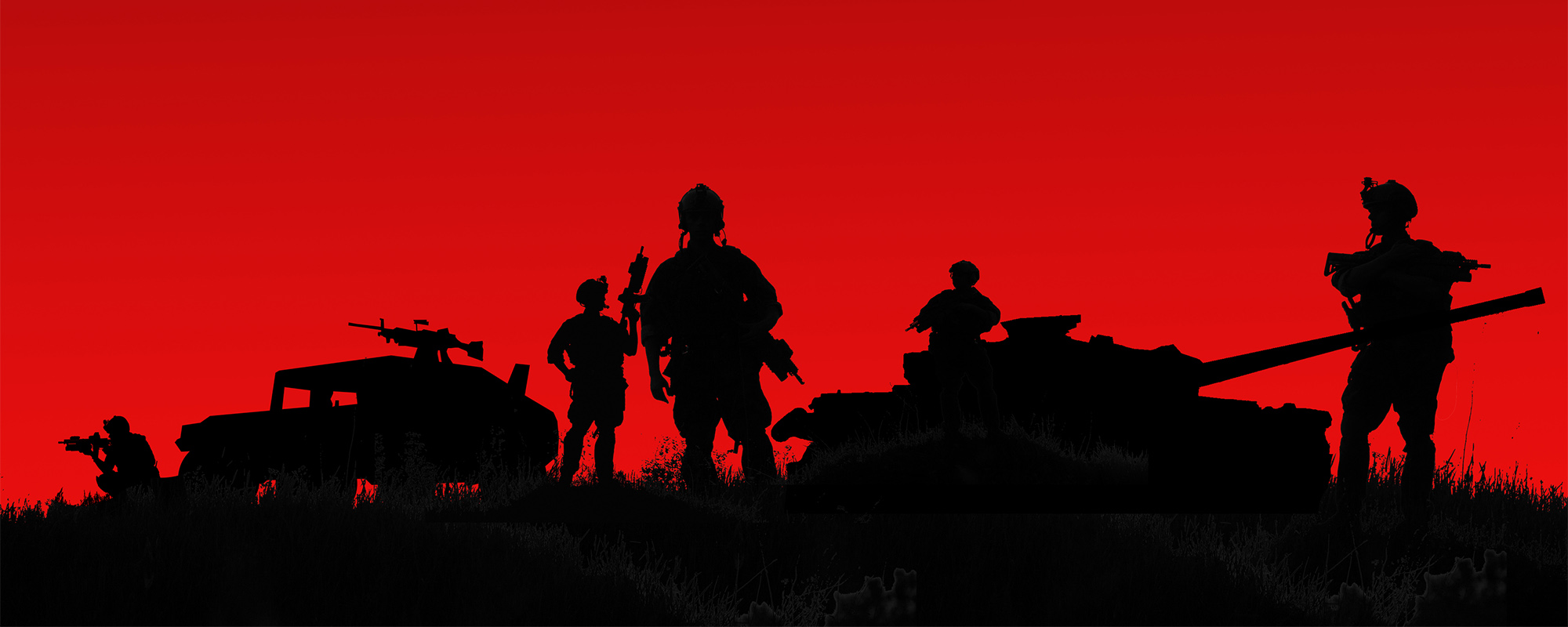When considering how a particular skill set might be applied, practice, process and experience are essential components of the discussion. In all roles in the ADF, technical mastery of specialist skills is achieved over months or even years of learning and practicing to be the best at a particular thing – shooting rifles, changing engines, flying aircraft, the list goes on. Operational planning and execution should be no different. Indeed, Australian military doctrine defines operational art as "the skilful employment of military forces to attain strategic goals through the design, organisation, sequencing and direction of campaigns and major operations."[1]
You’ll notice that I started with process and experience, which is the perspective I present here: Operational art is a combination of refined processes such as the Joint Military Appreciation Process (JMAP), and leadership experience and skill. This short article uses some historical examples to highlight this thesis. Firstly, the Western Front stalemate, then the second Iraq war. I will grossly simplify some of the nuances with these examples in the interests of time.
In the nineteenth century, the decisive battle concept shaped military experience and doctrine. Put simply, defeating the enemy in detail on the battlefield would lead to total victory. Clausewitz referred to the enemy centre of gravity in this way.[2] Logical then, that the Generals of both the Entente and Central powers sought this kind of victory. As history shows us, this was not to be the case. Industrial era mass armies, opposed along a small front, ground to a halt in a stalemate. Leaders such as Haig, Petain and Ludendorff, all products of nineteenth-century doctrine and experience, seemed unable to overcome the changed character of warfare.[3] A process that had proven so effective in the previous century was simply not enough to sustain a breakthrough. The stalemate changed with Foch.
After several years of observing the bloody stalemate, Generalissimo Foch understood the critical element in a successful campaign involved carefully linking objectives into a coherent plan. Foch could comprehend the entire front, draw on the experience of the previous three or so years, and link combined arms and intermediate objectives (process) into a wider operation.[4] This linking of objectives related to the breakthrough of the German Hindenburg line, severing the logistics, communications and reinforcement lines and circumventing the static defences. Foch and his general staff planned this campaign by capitalising on the experience of the previous years, understanding the environment, and linking a range of intermediate steps into a coherent whole. In this way, the battles of the Western front were the genesis of what we now consider operational art.
Fast forward nearly one hundred years… In 2003, coalition forces routed Iraqi forces in a short operation that echoed the shock and awe of the 1991 Gulf War. The rapid tactical successes led to premature declarations of victory that were soon proven wrong.[5] While the operation to remove Saddam Hussein from power was more or less successful, the overall campaign fell well short of success which was primarily to do with the planning process and incorrect assumptions. Operational planning, which this essay assumes to be analogous to the JMAP, provided a framework for planners to design operation Iraqi Freedom. However, key leaders were unprepared for the situation that would unfold without the experience of a similar scenario to draw on.[6] In a remarkably familiar parallel to the Western Front, the Iraq stalemate continued for several years with no end in sight and dwindling public support. Operational art, which had appeared so successful in the opening stages, was proving ineffective. One half of the solution was missing: sufficient experience, situational understanding and leadership, implemented under General David Petraeus.
Having operational experience in several subordinate commands during the earlier conflict, Petraeus intimately understood the complexity of the situation on the ground in Iraq. A process such as JMAP attempts to simplify complexity into subordinate and discrete elements which support the critical factors analysis. However, reductionist approaches to complexity defy the very nature of a complex system in which cause-effect relationships are difficult or impossible to know.[7] While a JMAP-like process can assist in identifying areas of vulnerability or weakness, understanding the true nature of complex relationships requires experience, skill and a degree of patience. Petraeus with first-hand experience of the environment formed temporally accurate operational concepts of counterinsurgency.[8] Coupled with the resources and personnel surge, Petraeus could apply operational art across eighteen months and dramatically alter the security situation on the ground.[9] Thus, an operational planning process contains cues to revisit the environmental state continually, but the framework is also reliant on the key personnel to apply and lead the process.
Finally, despite Petraeus’ combination of skill and process, misapplication still occurred in a related, but different theatre. The application of a planning process such as JMAP does not merely translate without a reassessment of the environment, the underlying assumptions, and a subsequent gaining of relevant experience as was then demonstrated in the somewhat carbon copy operation in Afghanistan. That’s an essay for another time and a topic that we’re all too familiar with.
Operational art is the “skilful employment of forces to attain strategic goals…” and is facilitated by a combination of experience, skill and process. The JMAP and similar planning processes provide a useful framework with which a commander and planning team can analyse a scenario and develop a range of options that address the desired endstate. A deliberate planning process is indispensable in forming a balanced plan and prosecuting operations successfully, but a process alone is not sufficient. As Afghanistan has also showed us, operational art is not temporally and geographically independent. Skilled application requires intimate knowledge of the complex reality of an individual theatre and the environment at the time. Operational art is a diarchy – process and experience.
This article is an abridged version of a longer essay produced for the Australian War College. The full text is available on request.
Defence, Department of. 'ADDP 5.0 Joint Planning.' Canberra: Defence Publishing Service, 2018.
French, David. 'The strategy of unlimited warfare: Kitchener, Robertson, and Haig.' in Great War, Total War: Combat and Mobilisation on the Western Front, 1914-1918, edited by Roger Chickering and Stig Förtser, 281-95. Cambridge: Cambridge University Press, 2000.
Greenhalgh, Elizabeth 'Myth and Memory: Sir Douglas Haig and the Imposition of Allied Unified Command in March 1918.' The Journal of Military History 68, no. 3 (2004): 771-820.
Harris, Paul. Douglas Haig and the First World War. Cambridge: Cambridge University Press, 2008.
Jackson, Aaron P. 'Centre of Gravity Analysis “Down Under”: The Australian Defence Force’s New Approach.' Joint Forces Quarterly 84, no. 1st Quarter (2017).
Mansoor, Peter. Surge - My Journey with General David Petraeus and the Remaking of the Iraq War. New Haven, CT: Yale University Press, 2013.
Packer, George. 'The Lesson of Tal Afar.' (2006). Published electronically 03 Apr. https://www.newyorker.com/magazine/2006/04/10/the-lesson-of-tal-afar.
Russell, James A. 'Innovation in War: Counterinsurgency Operations in Anbar and Ninewa Provinces, Iraq, 2005-2007.' Journal of Strategic Studies 33, no. 4 (2010): 595-624.
Von Clausewitz, Carl. On War. edited by Michael Howard and Peter Paret New York: Everyman’s Library, 1993.
Wright, Donald, and Timothy Rees. On Point II, Transition to a New Campaign: The United States Army in Operation Iraqi Freedom May 2003-January 2005. Fort Leavenworth: CSI Press, 2008.
Ząbecki, David T. . 'The Allied General Offensive: Foch moves in the for the Kill.' in The Generals’ War - Operational Level Command on the Western Front in 1918: Indiana University Press, 2018.
[1] Department of Defence, ADDP 5.0 Joint Planning, 3 ed. (Canberra: Defence Publishing Service, 2018). p 2-1
[2] Carl Von Clausewitz, On War, ed. Michael Howard and Peter Paret (New York: Everyman’s Library, 1993).
[3] Paul Harris, Douglas Haig and the First World War (Cambridge: Cambridge University Press, 2008); Elizabeth Greenhalgh, 'Myth and Memory: Sir Douglas Haig and the Imposition of Allied Unified Command in March 1918,' The Journal of Military History 68, no. 3 (2004); David French, 'The strategy of unlimited warfare: Kitchener, Robertson, and Haig,' in Great War, Total War: Combat and Mobilisation on the Western Front, 1914-1918, ed. Roger Chickering and Stig Förtser (Cambridge: Cambridge University Press, 2000).
[4] David T. Ząbecki, 'The Allied General Offensive: Foch moves in the for the Kill,' in The Generals’ War - Operational Level Command on the Western Front in 1918 (Indiana University Press, 2018).
[5] Donald Wright and Timothy Rees, On Point II, Transition to a New Campaign: The United States Army in Operation Iraqi Freedom May 2003-January 2005 (Fort Leavenworth: CSI Press, 2008). p 144
[6] Peter Mansoor, Surge - My Journey with General David Petraeus and the Remaking of the Iraq War (New Haven, CT: Yale University Press, 2013).
[7] Aaron P. Jackson, 'Centre of Gravity Analysis “Down Under”: The Australian Defence Force’s New Approach,' Joint Forces Quarterly 84, no. 1st Quarter (2017).
[8] George Packer, "The Lesson of Tal Afar," (2006), https://www.newyorker.com/magazine/2006/04/10/the-lesson-of-tal-afar.
[9] James A. Russell, 'Innovation in War: Counterinsurgency Operations in Anbar and Ninewa Provinces, Iraq, 2005-2007,' Journal of Strategic Studies 33, no. 4 (2010).
Image credit: ID 134429729 © Mast3r | Dreamstime.com



Comments
Start the conversation by sharing your thoughts! Please login to comment. If you don't yet have an account registration is quick and easy.